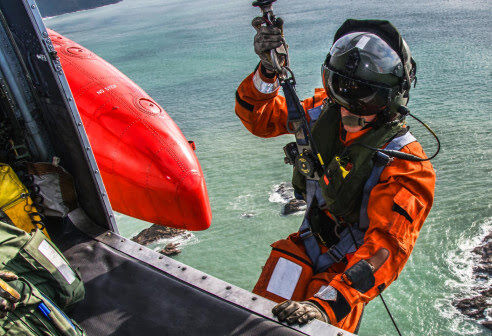This blog article was published in 2018 but has been updated for 2022.
Introduction
We live in a global village — technology transcends borders, making knowledge accessible to more people, regardless of time zone or environment. With the proliferation of devices, from computers to portable smart devices, and ever-increasing connectivity, more people are able to take advantage of digital learning opportunities.
This results in a greater chance to connect, communicate and collaborate.
What we have seen is that many adverse outcomes in missions are the result of miscommunication during transitions in care. Our founder story is a testament to this. The reason TracPlus, and many other technology companies in our industry, exist is to ensure more people are getting home safely.
We cannot deny that technology is advancing at a great rate of knots, but it is important that emergency services and first responders are able to trust that these advancements are reliable. Our goal is to alleviate stress, so they can focus on immediate danger and not have to fear that technology may fail. Their work is a matter of life and death - and they need to be able to focus purely on the task at hand.
If the industry can help support better communication and collaboration between emergency service providers throughout missions, we will see better outcomes. That is our mission here at TracPlus.

Helping the helpers
Effective emergency management depends on the quality of the information and tools available to decision makers (including the community) at the time decisions need to be made.
Interoperability is the ability of systems, personnel, and equipment to provide and receive functionality, data, information and/or services to and from other systems, personnel, and equipment, between both public and private agencies, departments, and other organizations, in a manner enabling them to operate effectively together.
Put simply, it’s collaboration and communication.
By pooling resources and skills, groups are able to find success in missions that they may not be able to alone.

Communication, collaboration and cooperation
“If you want to go fast go alone, but if you want to go far, go together” - African Proverb.
In the helpers market, it is not unusual for platforms and companies to work well together. First responders demonstrate the epitome of teamwork and collaboration, and it’s their camaraderie that has helped the industry see such growth and success in their ability to better our communities. They work together tirelessly to uphold and better our communities, and this is undoubtedly clear in natural disasters and emergencies.
First responders come together in times of emergency to operate as one unit. Why then should technology not mirror that environment and come together?
Like the work demonstrated by emergency response teams, innovation in isolation will never be effective. It requires a concerted inter-agency and private operator level of coordination and cooperation so those who operate in harm's way can do their jobs more safely and more effectively.
As technology providers, we too need to take a collective and collaborative approach. No single company will deliver all functionality. Instead, it’s vital we employ an ecosystem approach that allows flexibility and choice. Autonomy needs to win the day.
People must come first.
In order to support first responders to do their jobs more effectively, we need to continue to develop and refine our technologies and systems. However, we need to accept that change is almost impossible without industry-wide collaboration, cooperation, and consensus.
The future will continue to be challenging. The test for technology companies will be to ensure that these operators receive the best support possible. Cumulatively, their role should be to help those who help others.
We’ve seen a lack of empathy on the part of suppliers, telling the helpers “this is what you need.” This is simply a piecemeal approach. Rather, we need to employ the alternative and ask, “how might we work together to remedy this for you?”
“Our goal is to offer peace of mind and better outcomes. It should never be winner takes all. If we adopt that approach in this sector we all lose.”
We are not fulfilling our mandate and duty of care to our market, or our responsibility, if we are not working as a choir. Currently, we see and hear a cacophony of noise. We need to be working together to have harmony.
I challenge technology providers to look at the demeanour and work ethic of our first responders and model their united approach. Globally successful business can be created while making the world a better and safer place through the power of connected communities.
This is why we have adopted an ecosystem play. We know we will never be everything to everyone. Rather than denying people of choice, we are actively pursuing more relationships and more partnerships so we can find solutions that help people, help others.
A business model that puts people first is the only way forward.
Reach out to us. Let’s march in the same direction.
A great example of this was the Earthquake events in Kaikoura, New Zealand, in 2016. The earthquake triggered tsunami warnings, terribly rough seas, and caused severe damage to roads — meaning access in and out of Kaikoura was near impossible.
The quake demonstrated how collaboration was the only solution to help the town move forward. We saw the coming together agencies and services, both governmental, corporate, and volunteer. In times of distress, there is simply no other way. Helpers come together to reflect the best in humankind — working in harmony to achieve a common overarching goal and objective. There is never one single solution, nor one hero.
If you're interested in how the TracPlus platform helps operators collaborate with multiple agencies through data sharing, reach out to us to learn more today.
